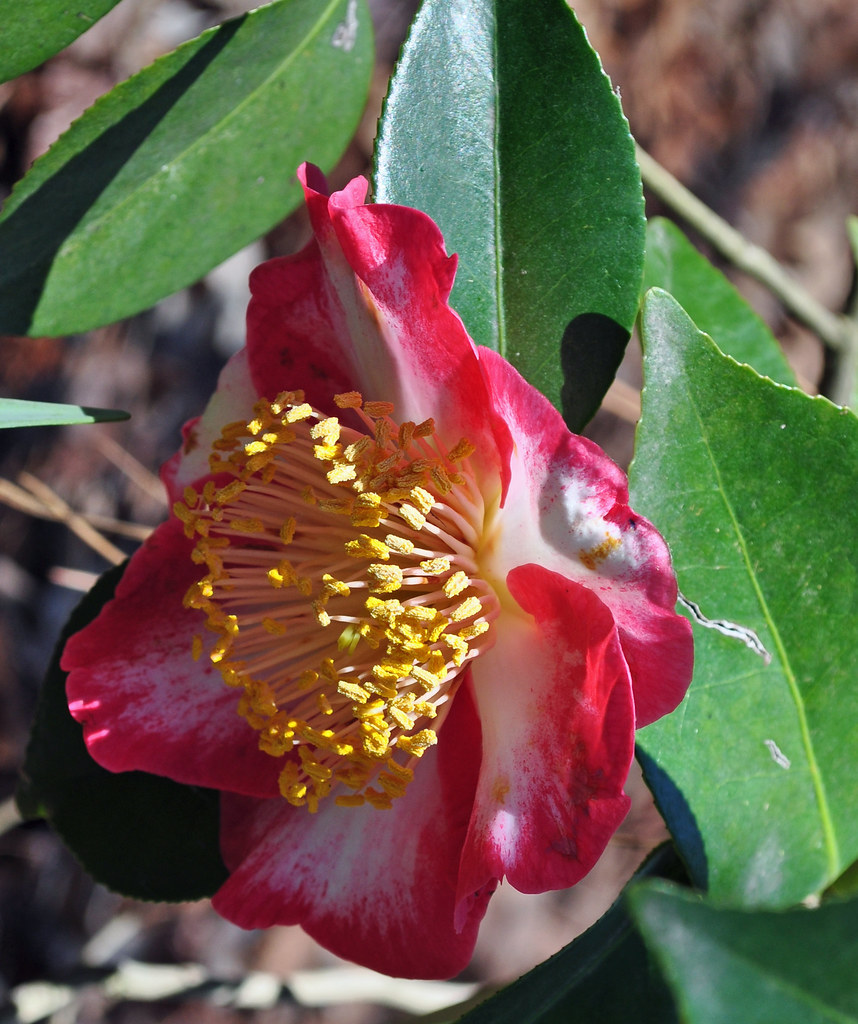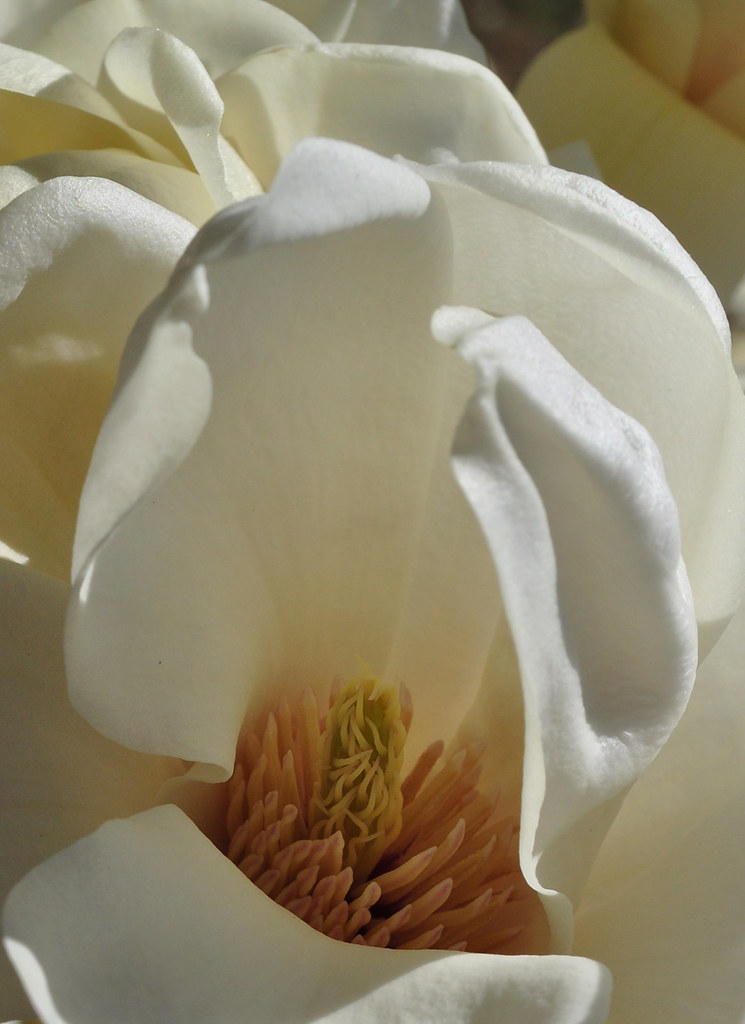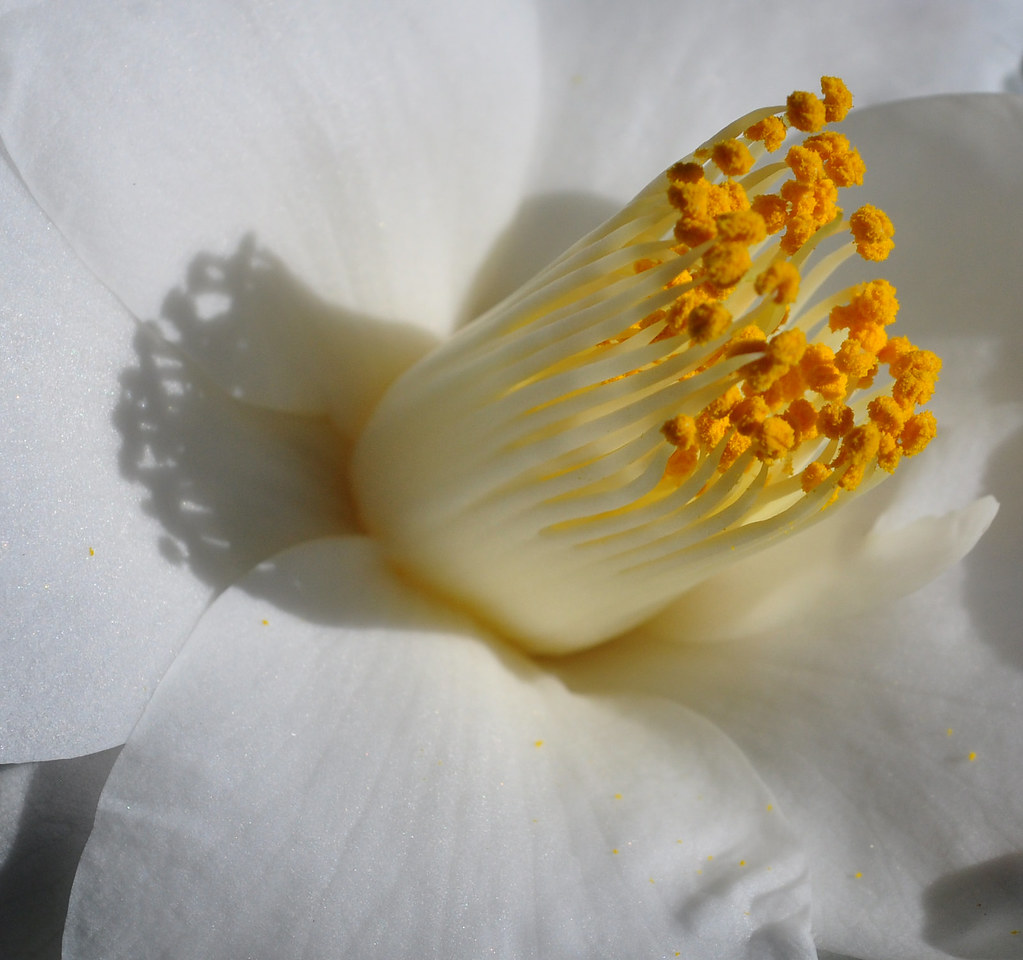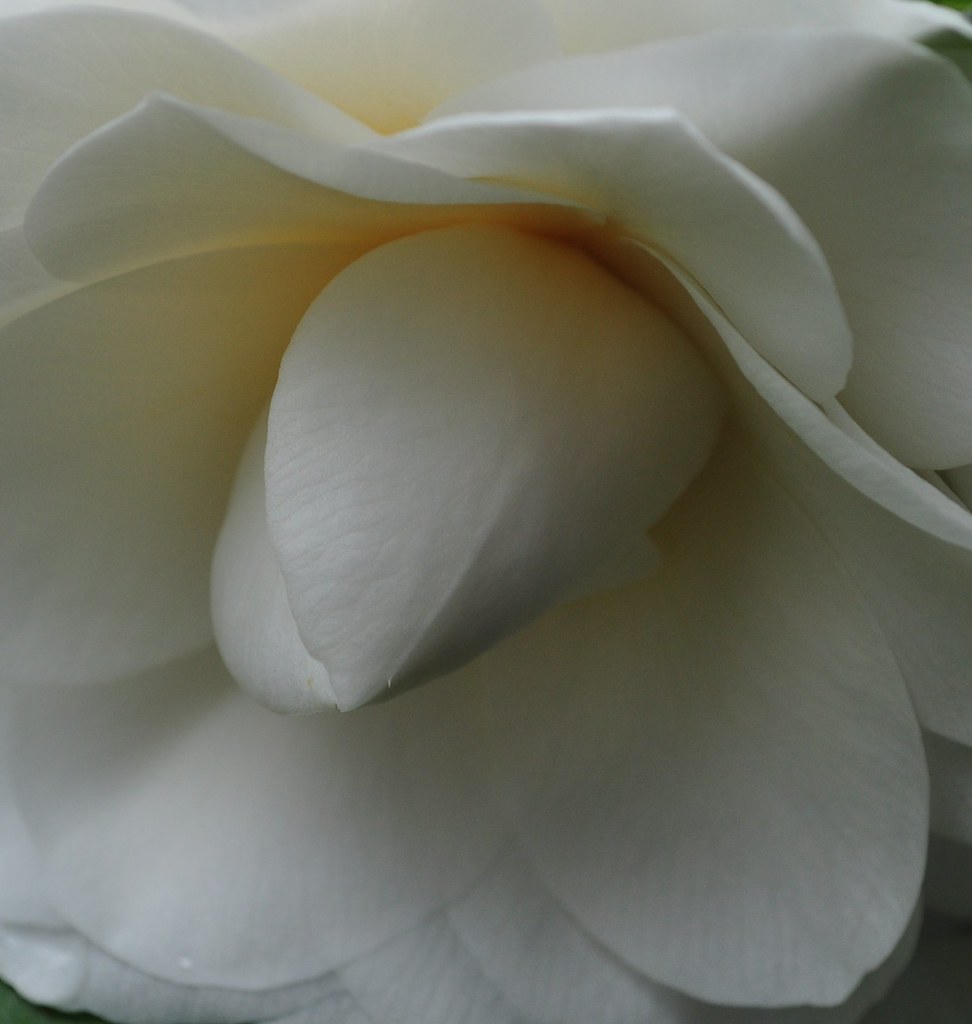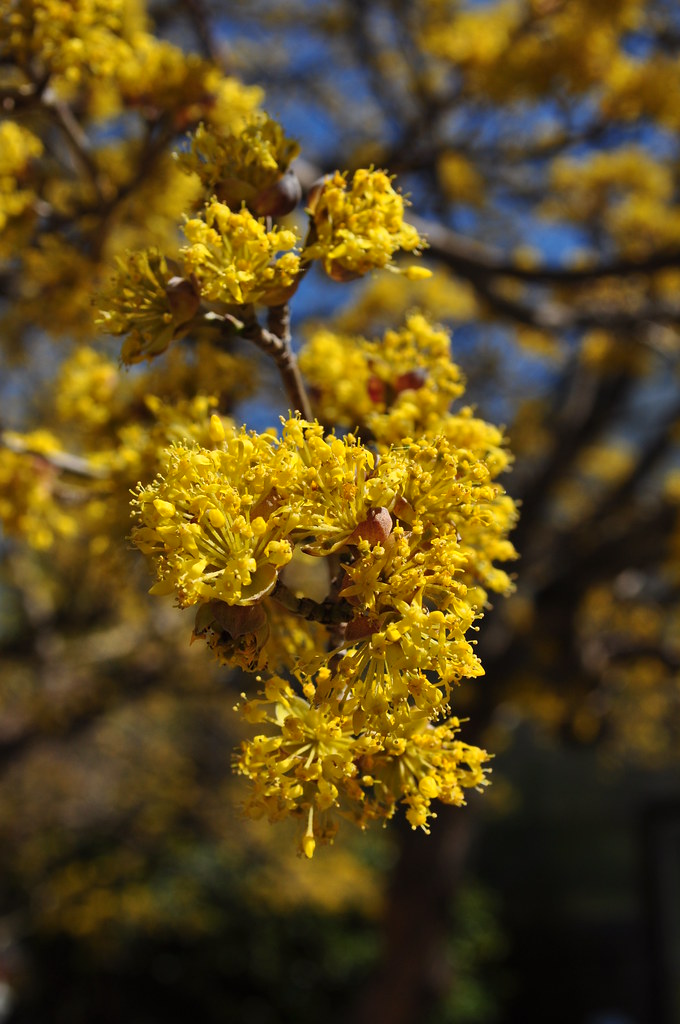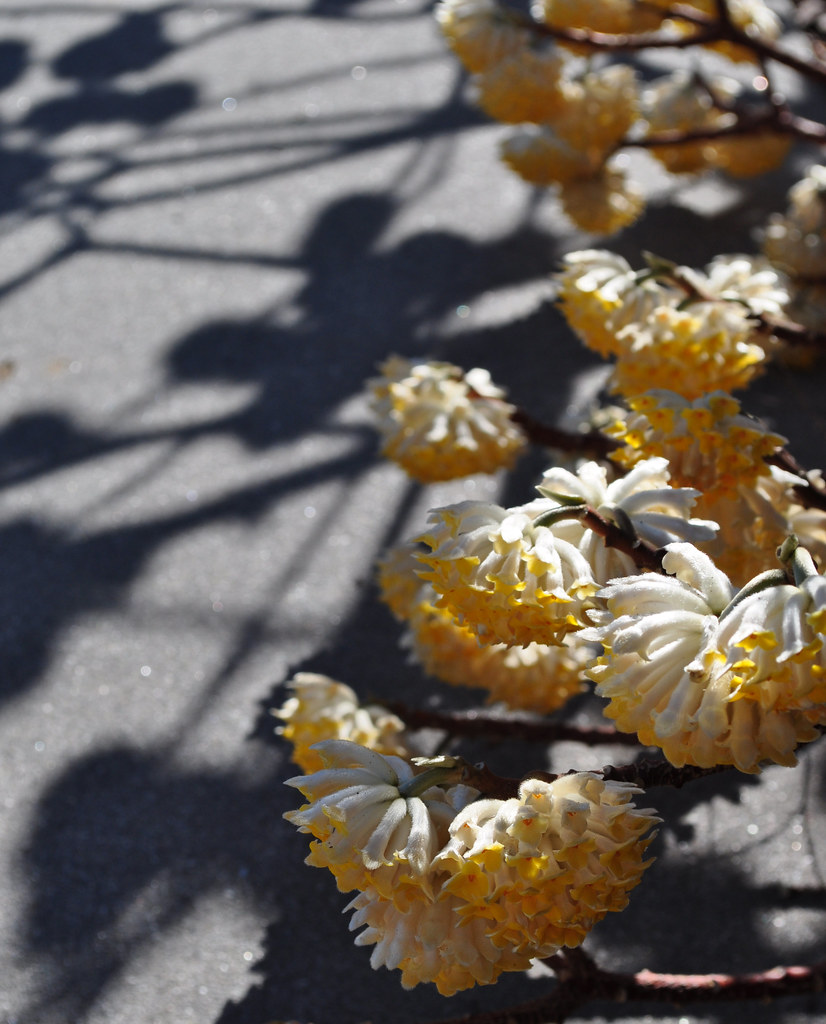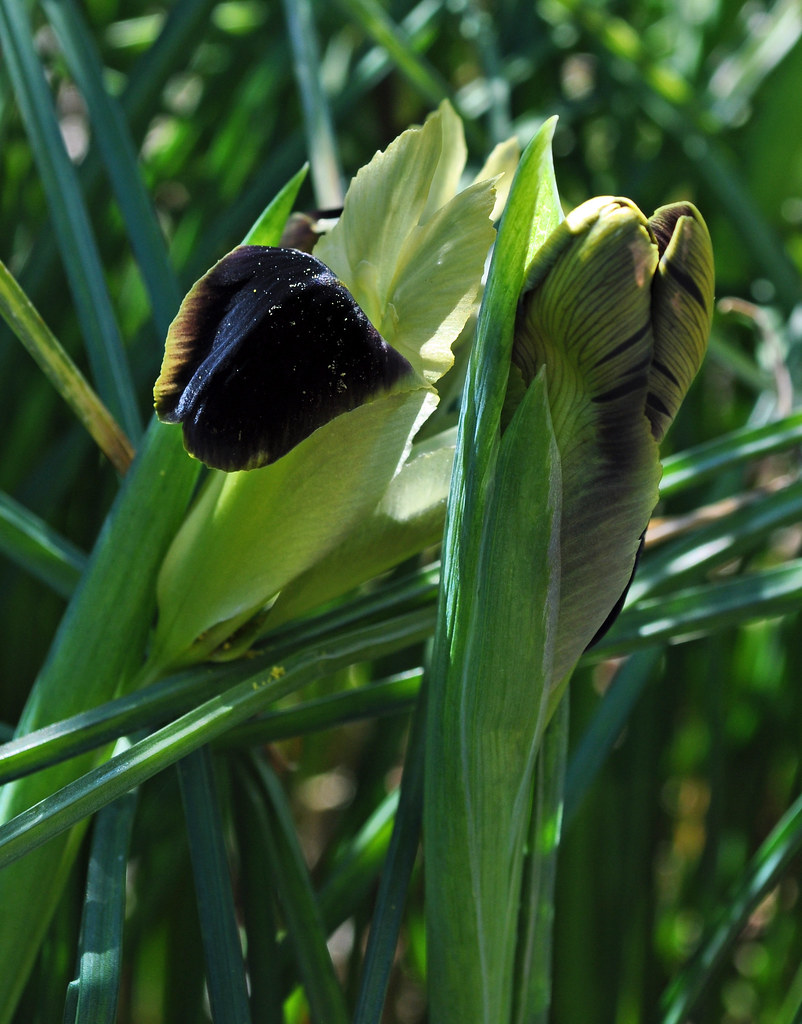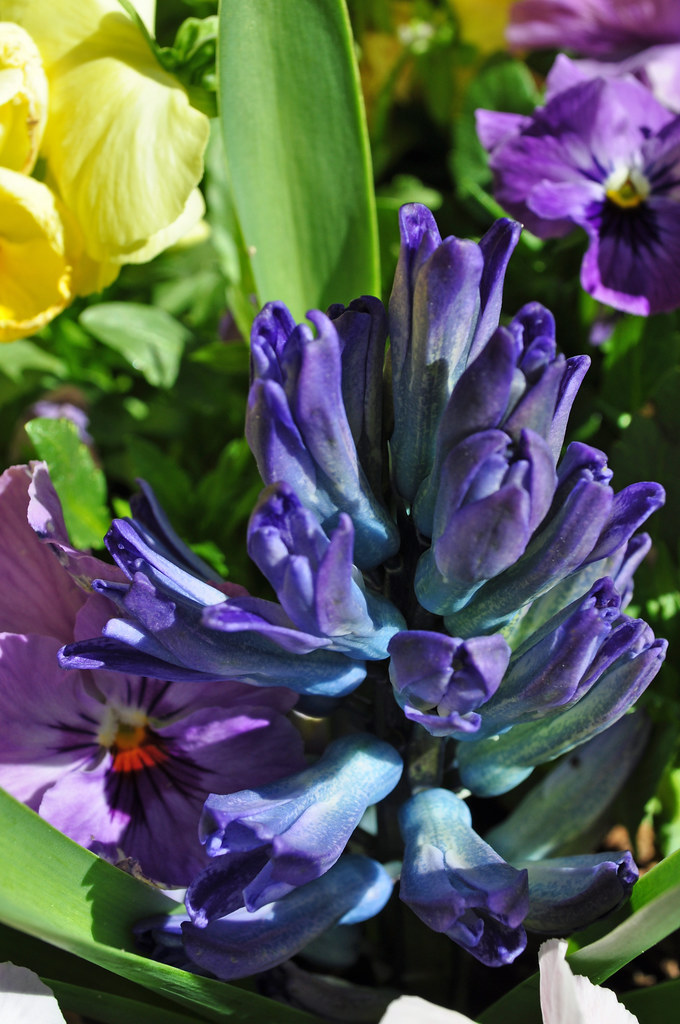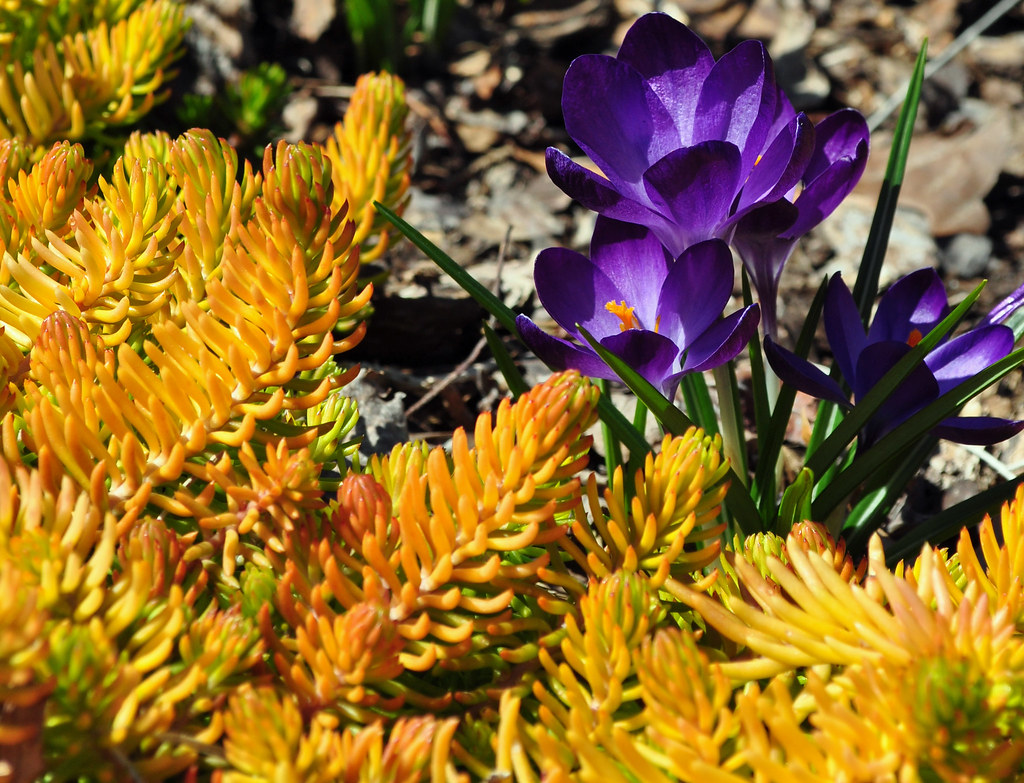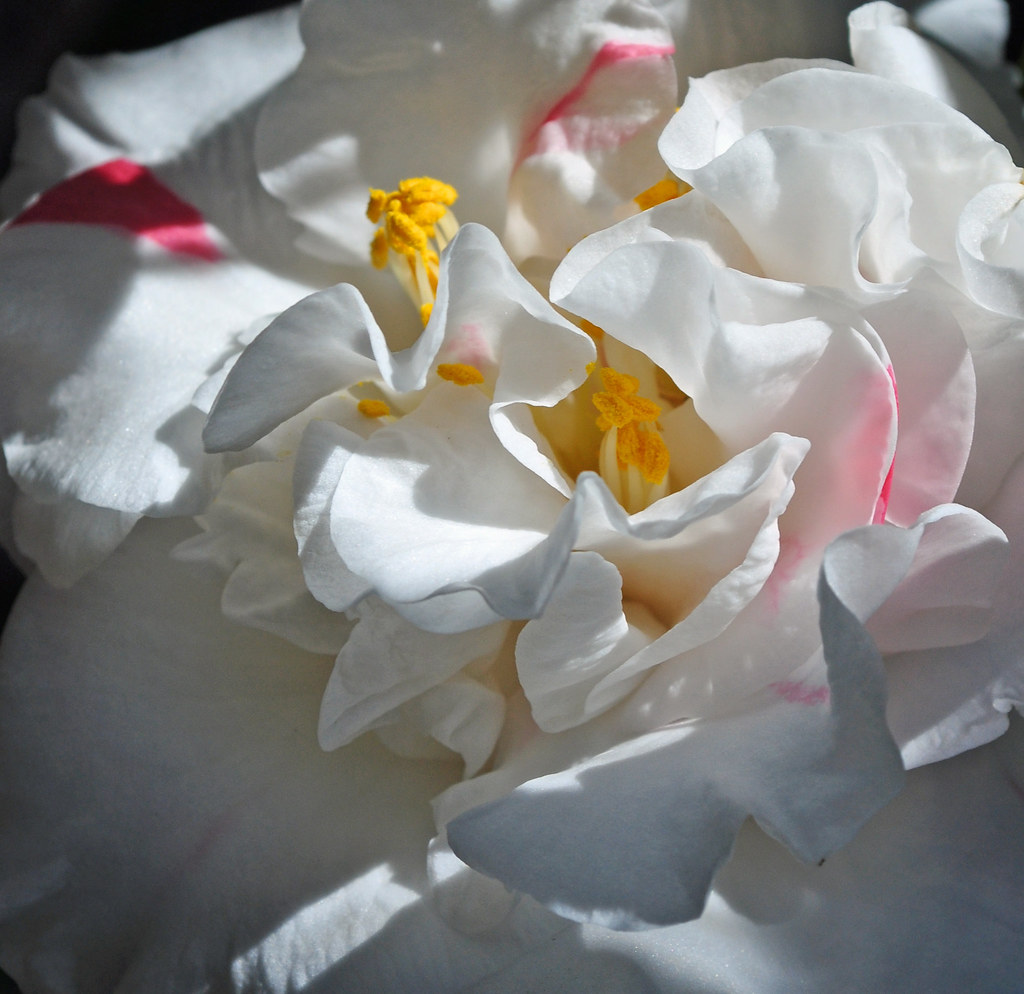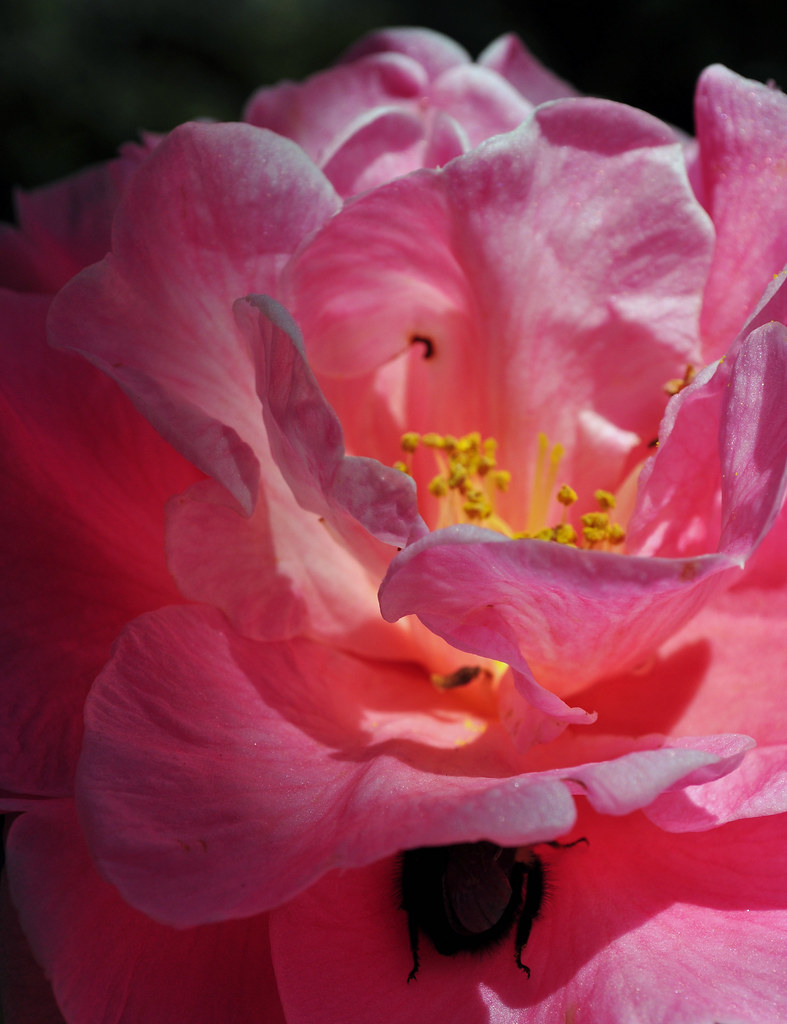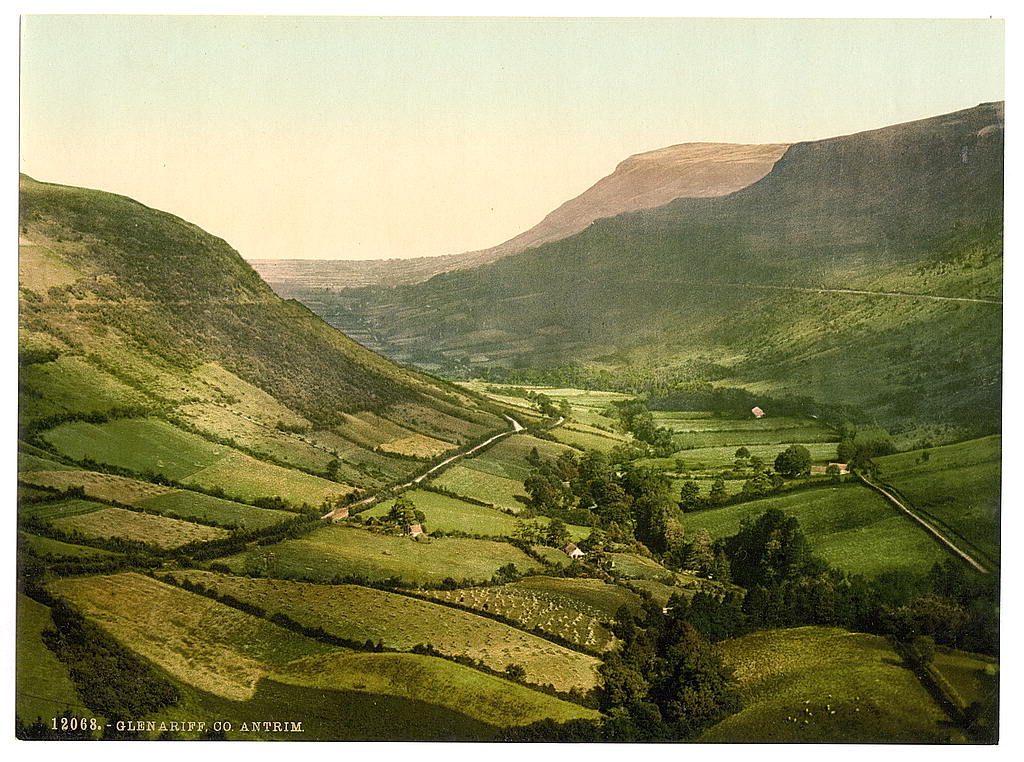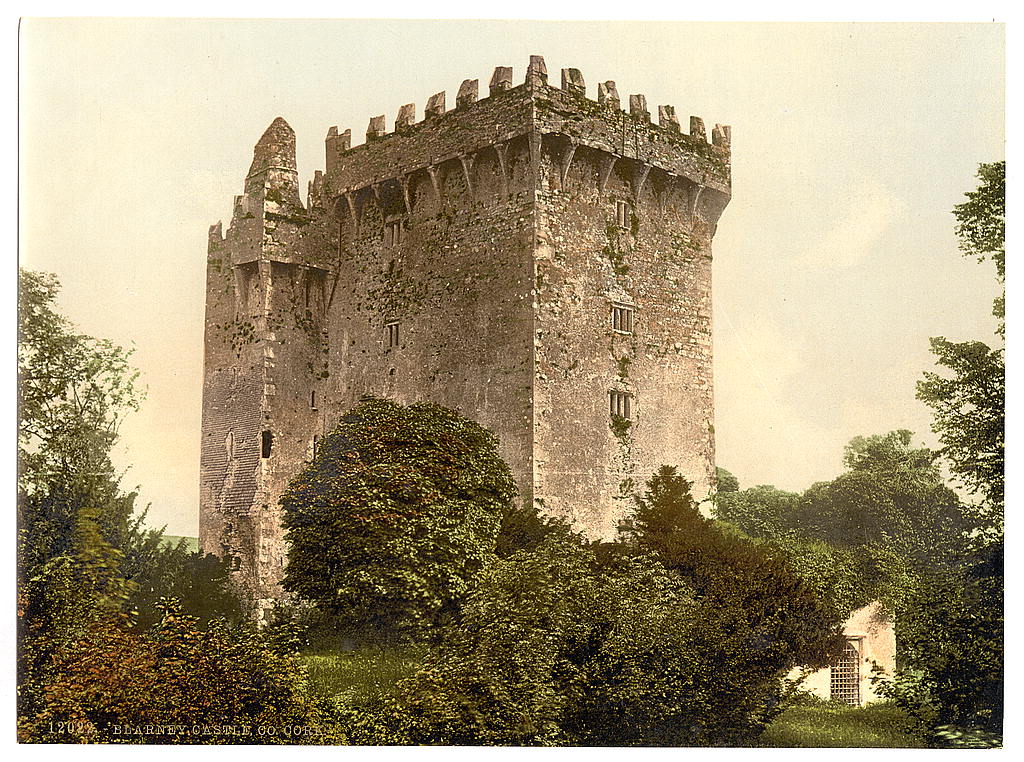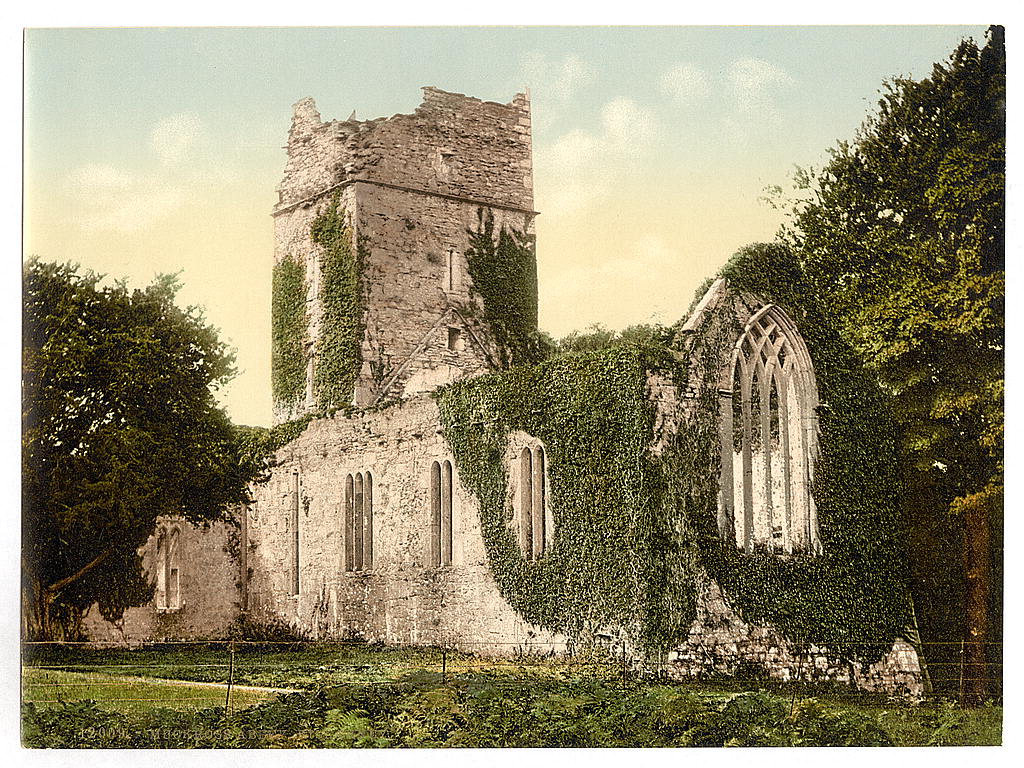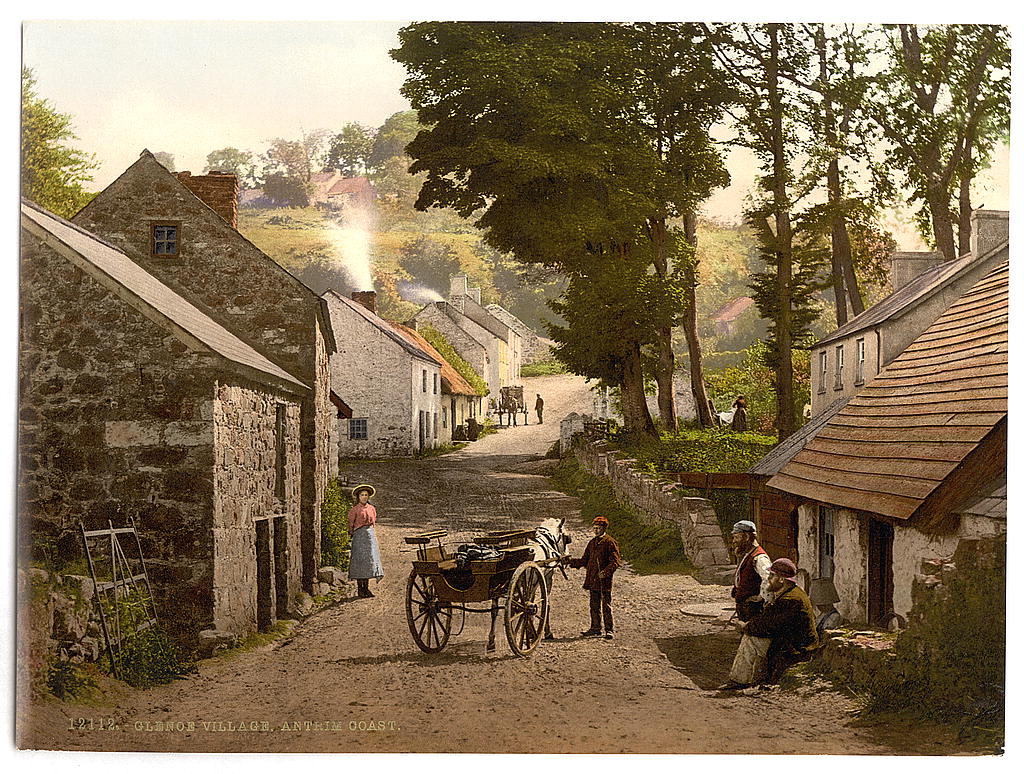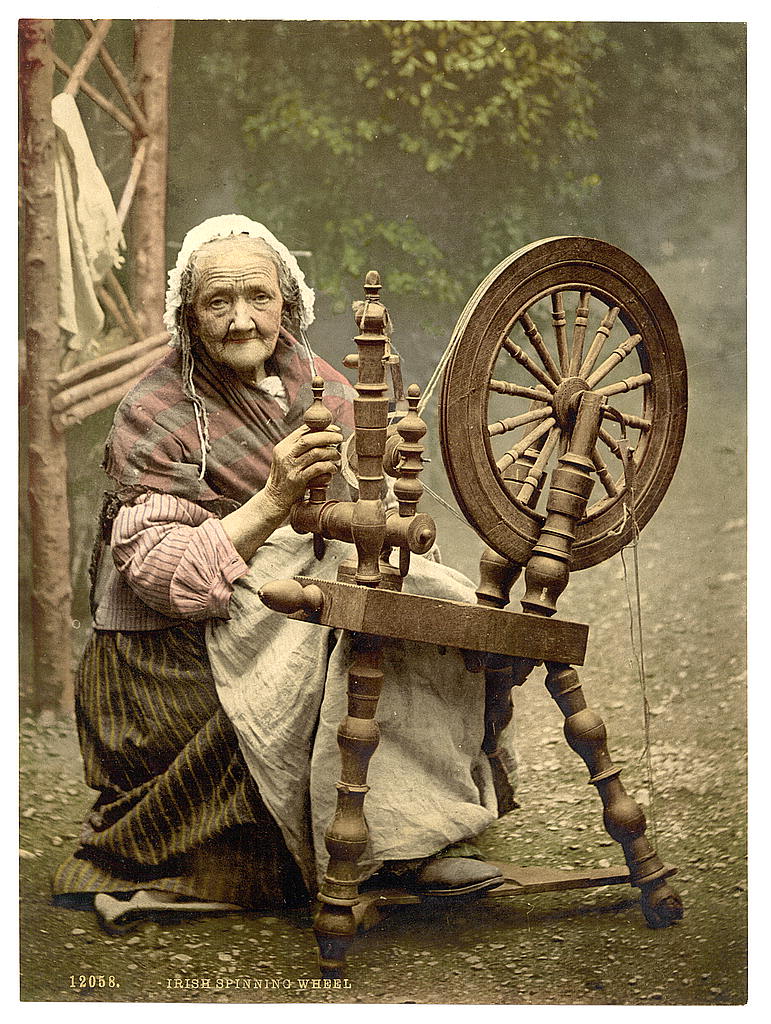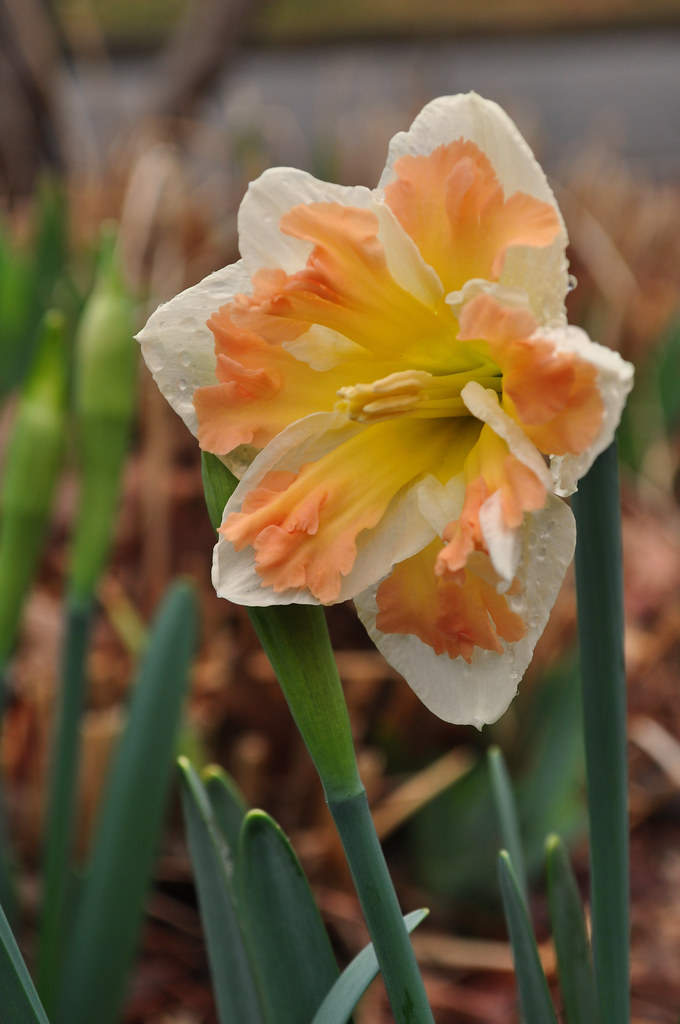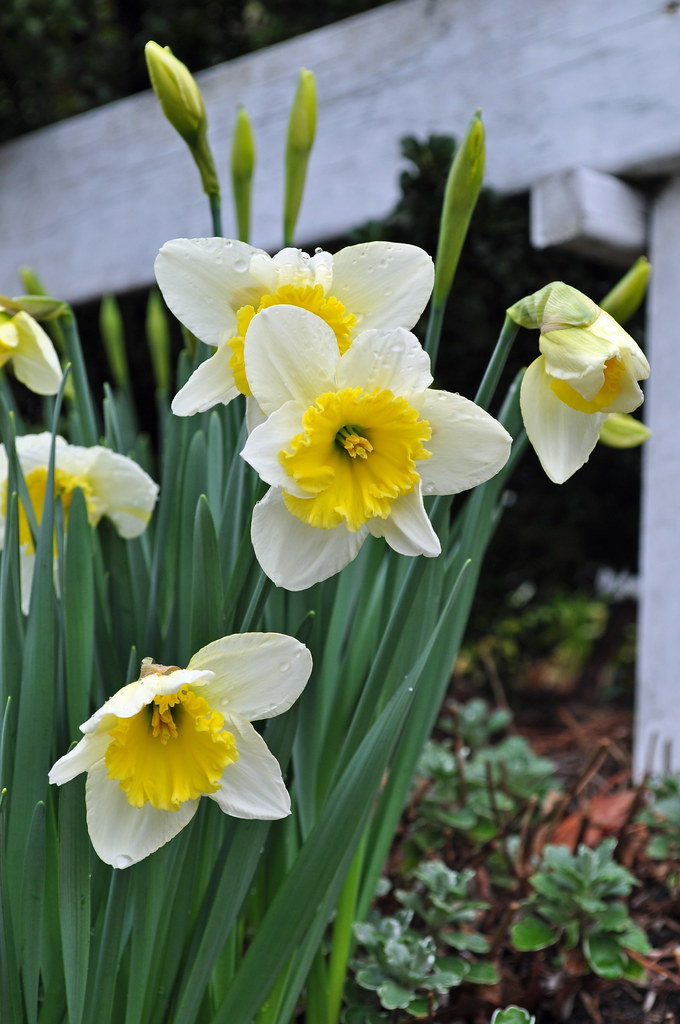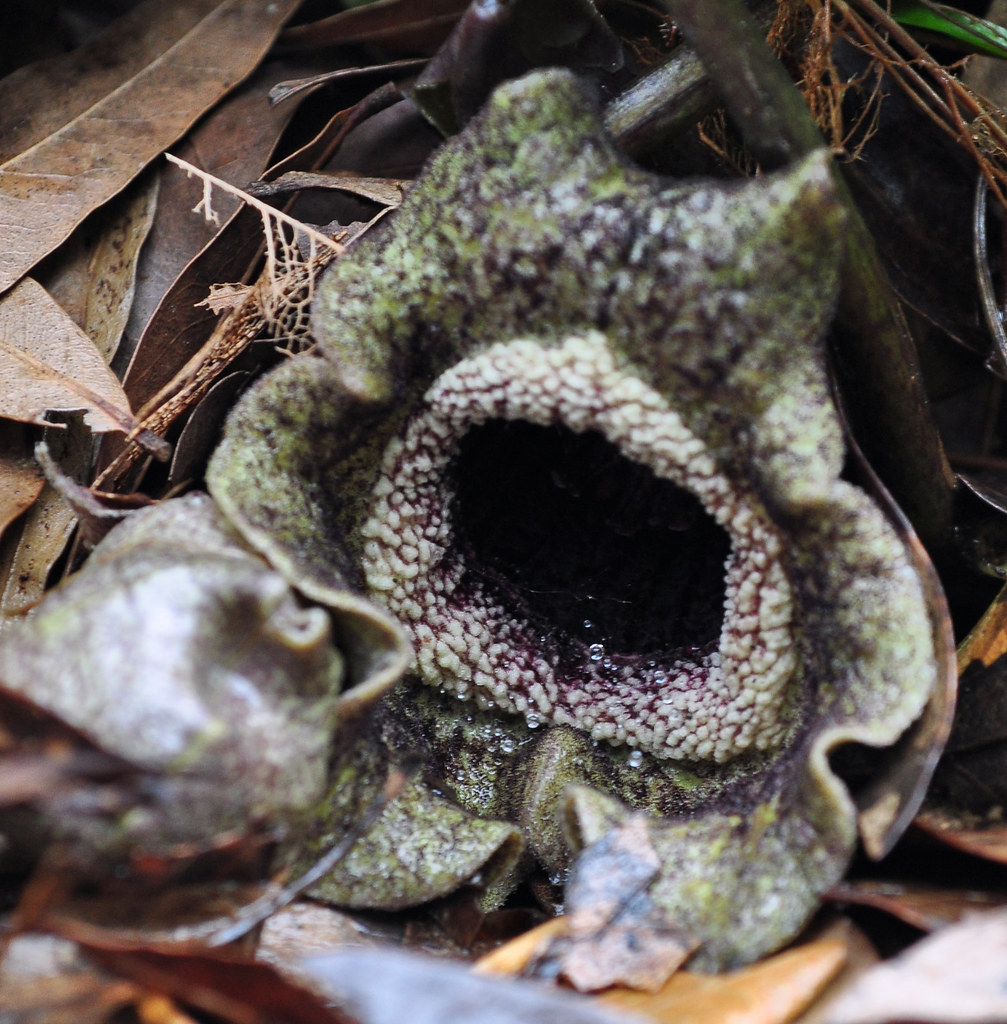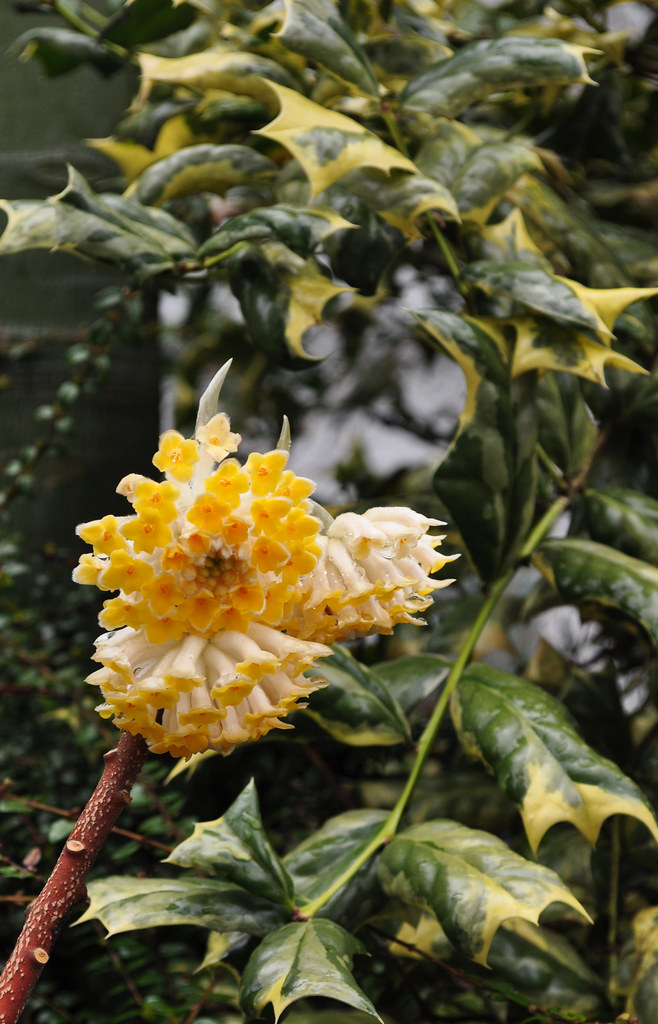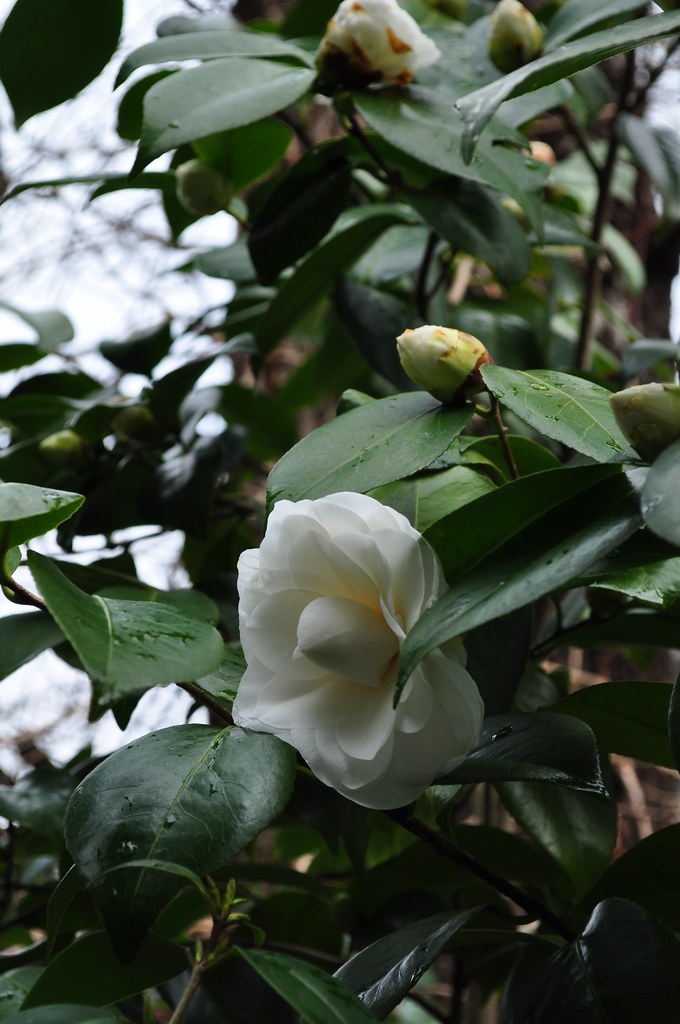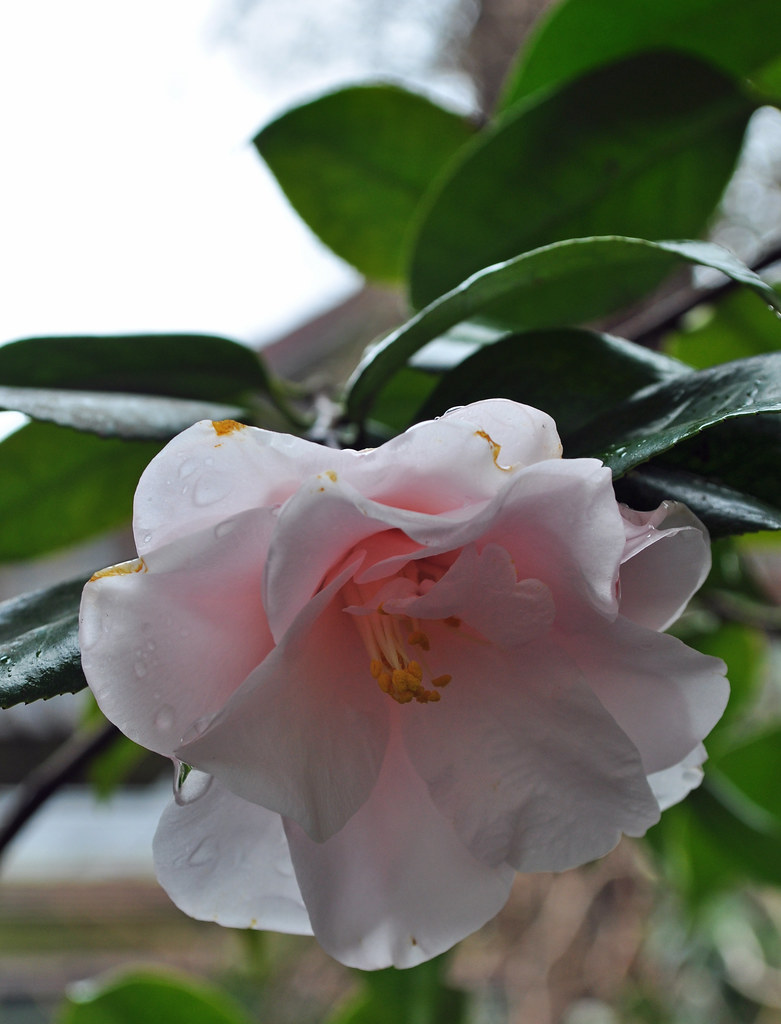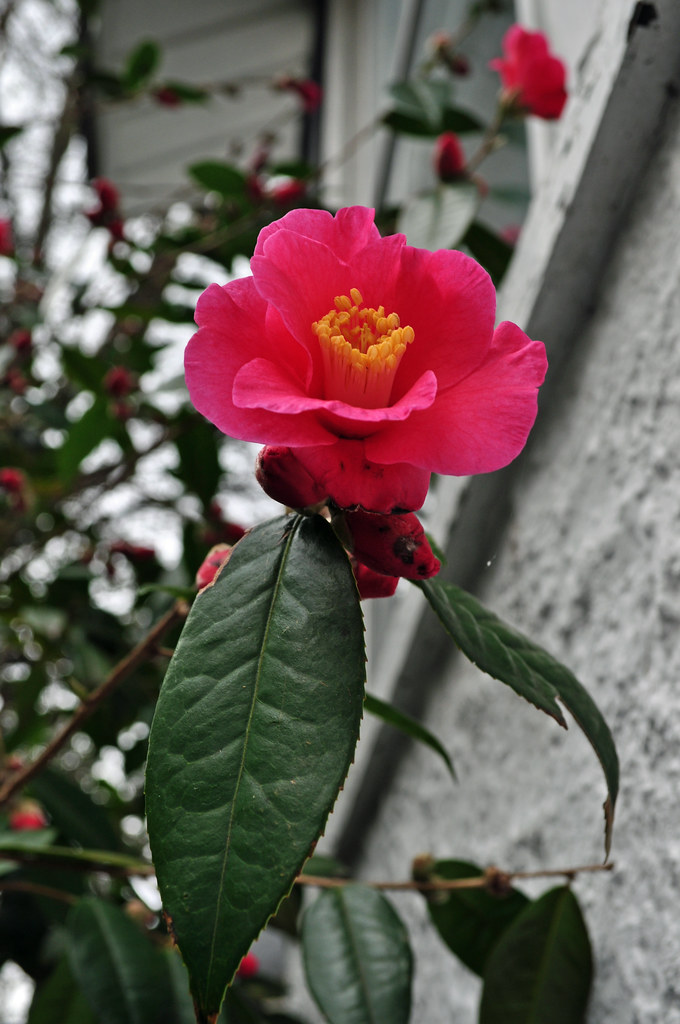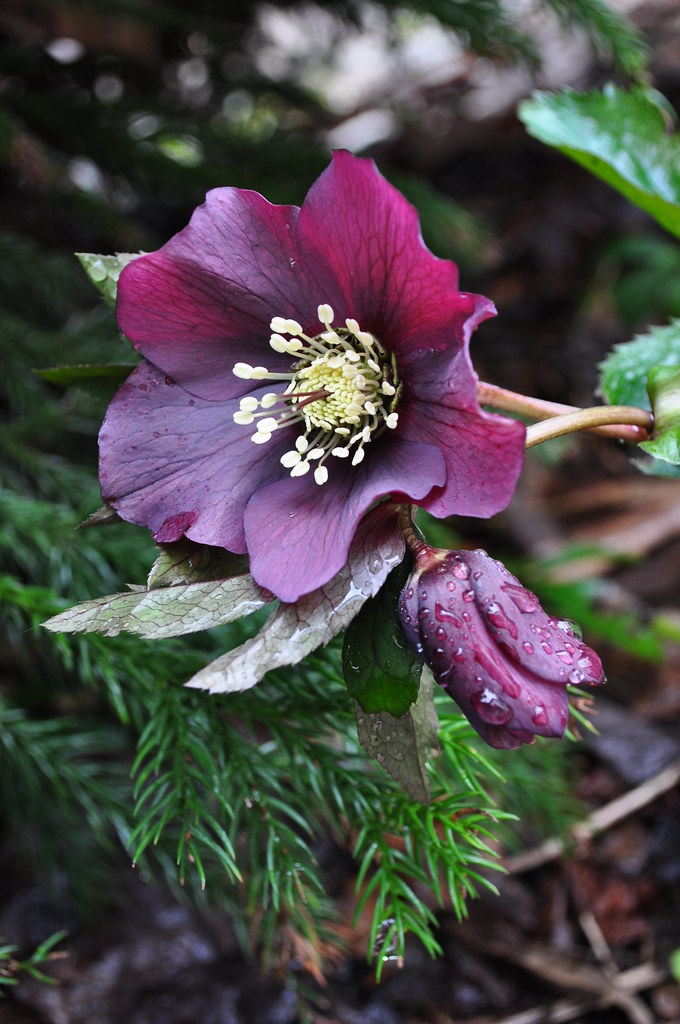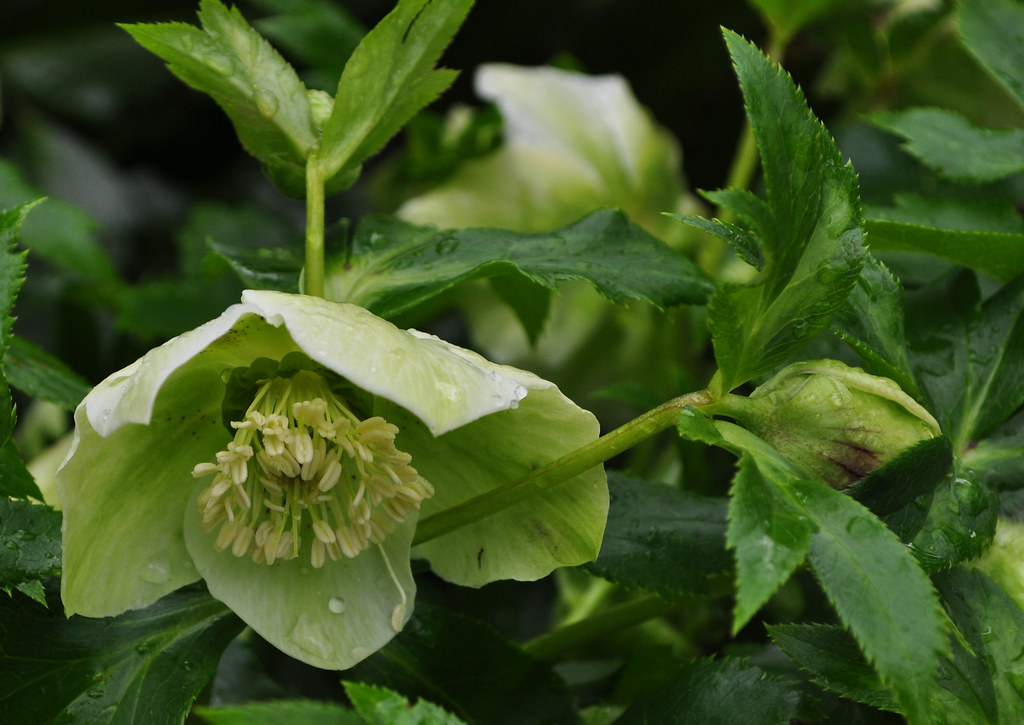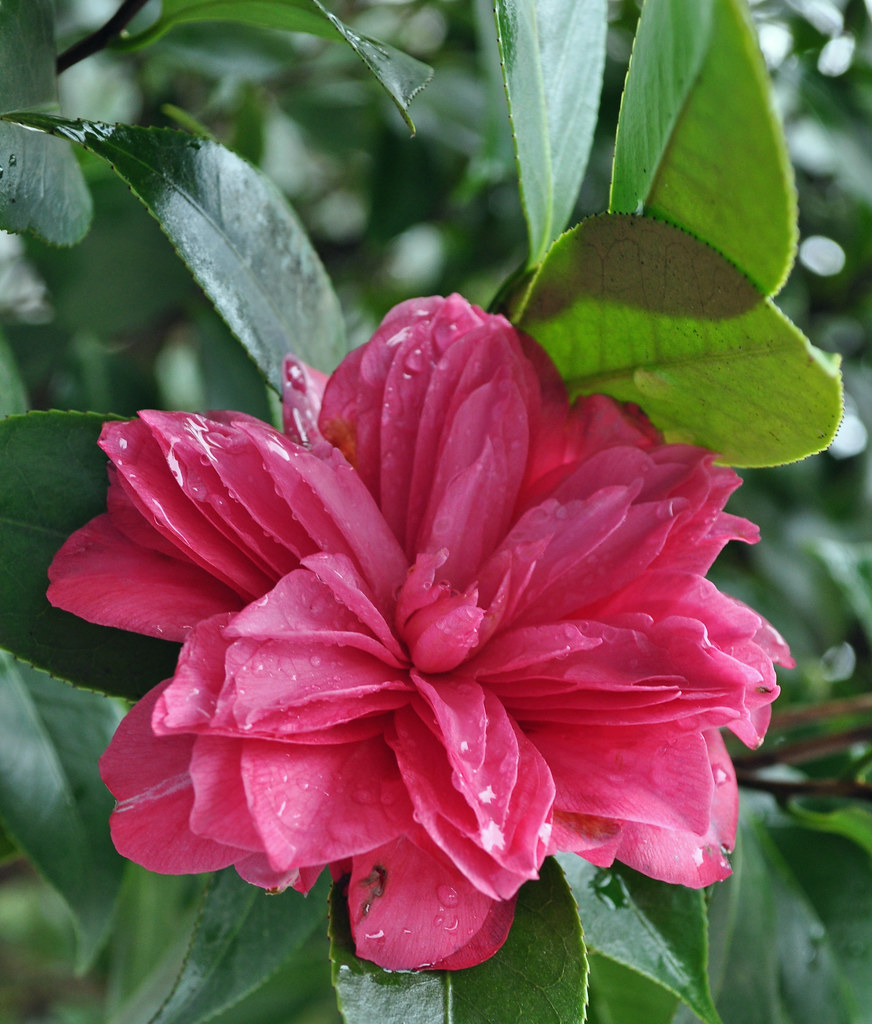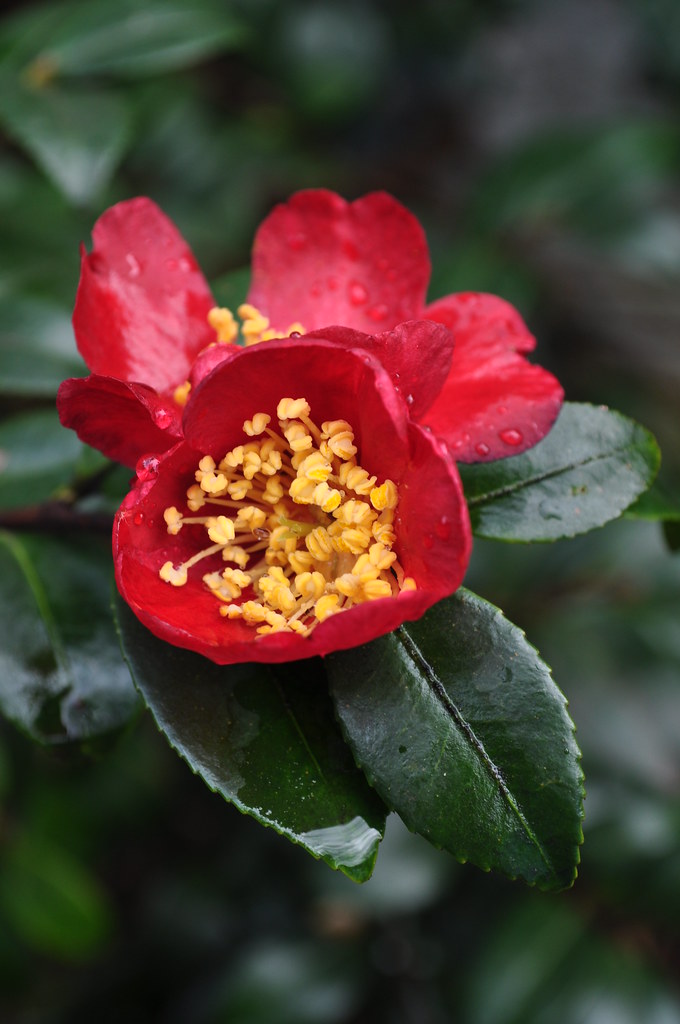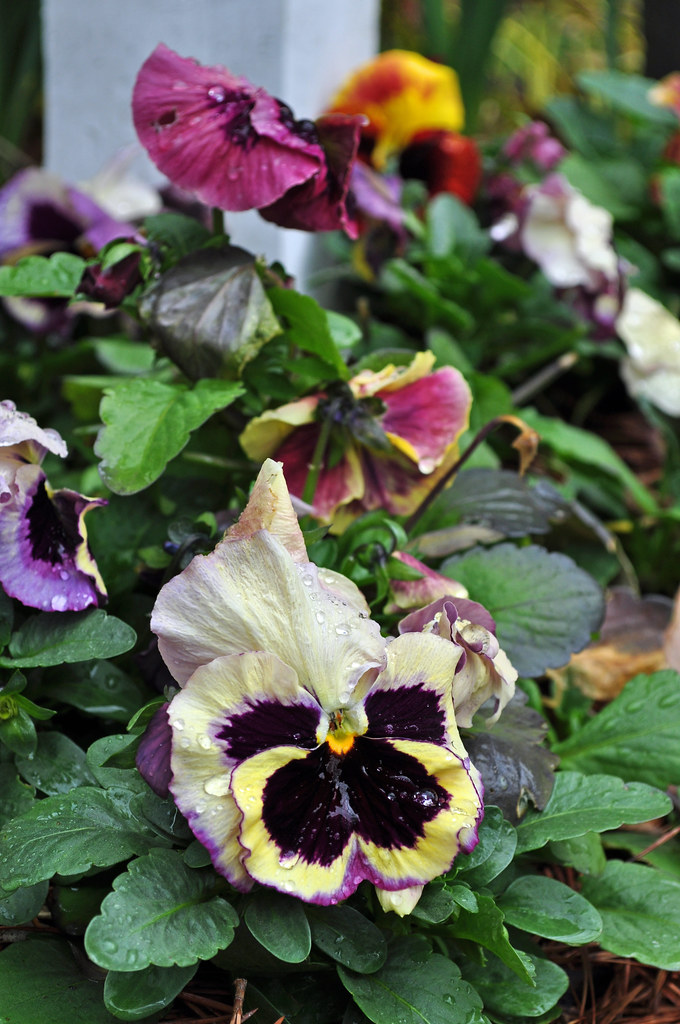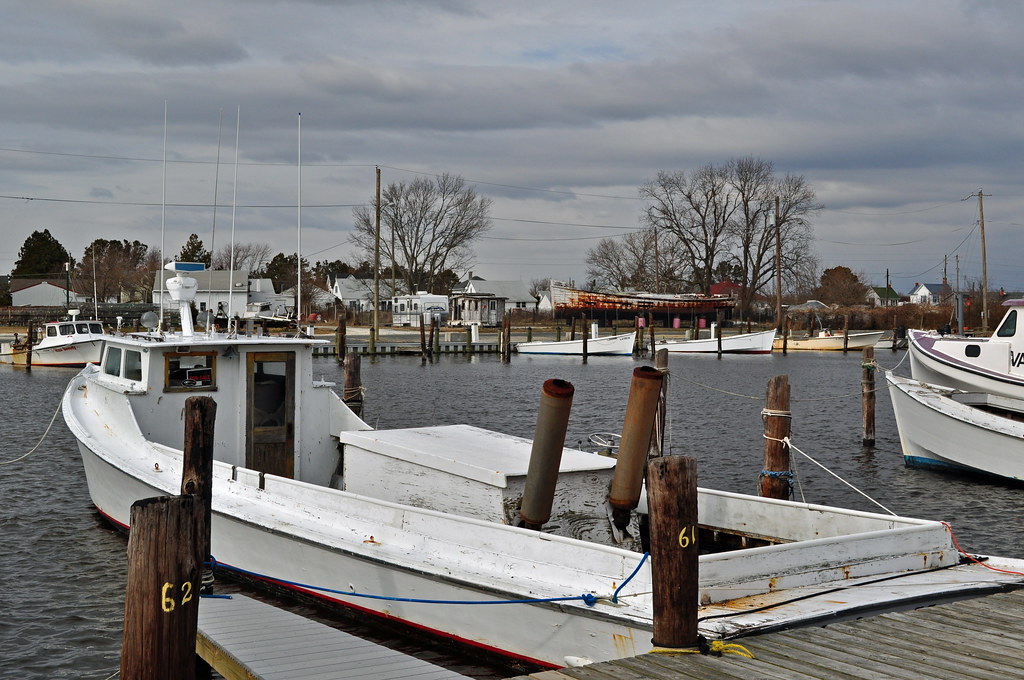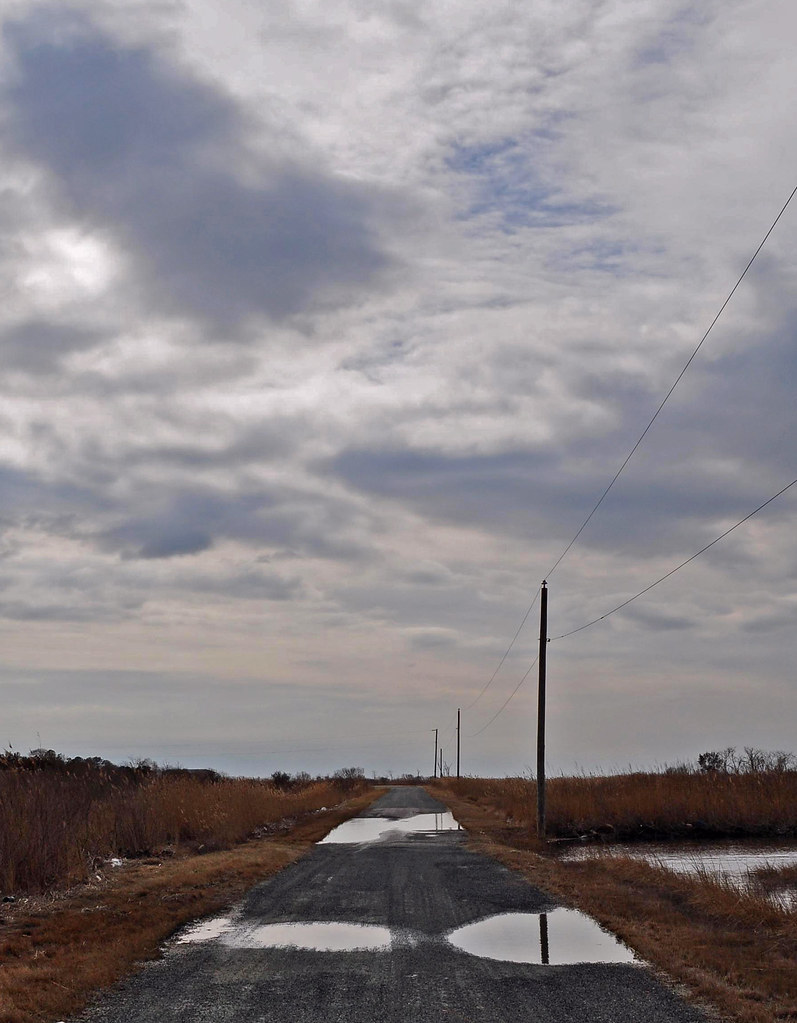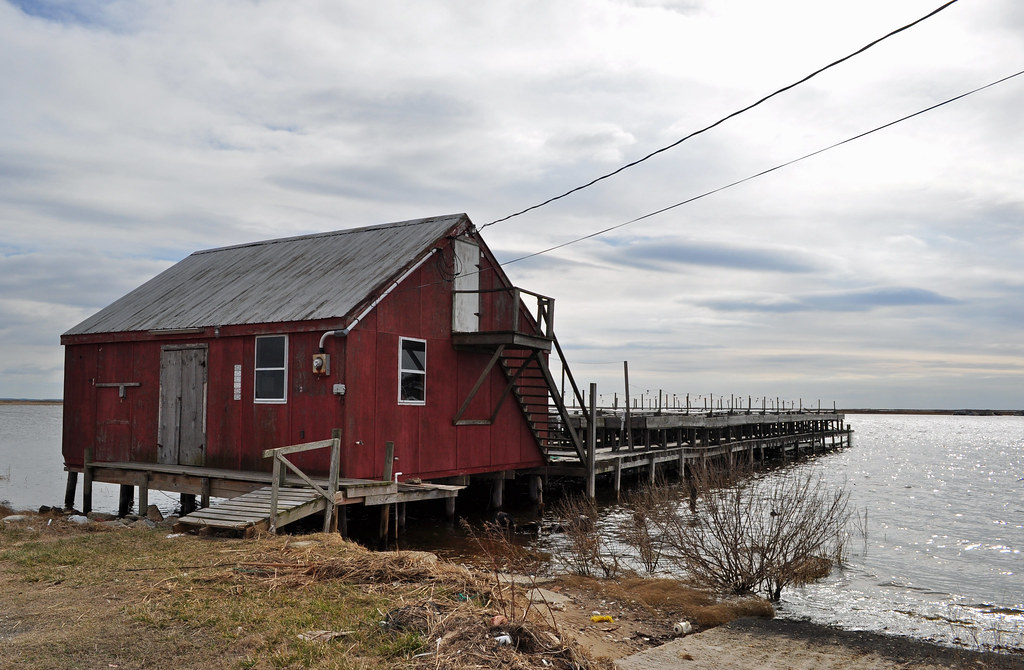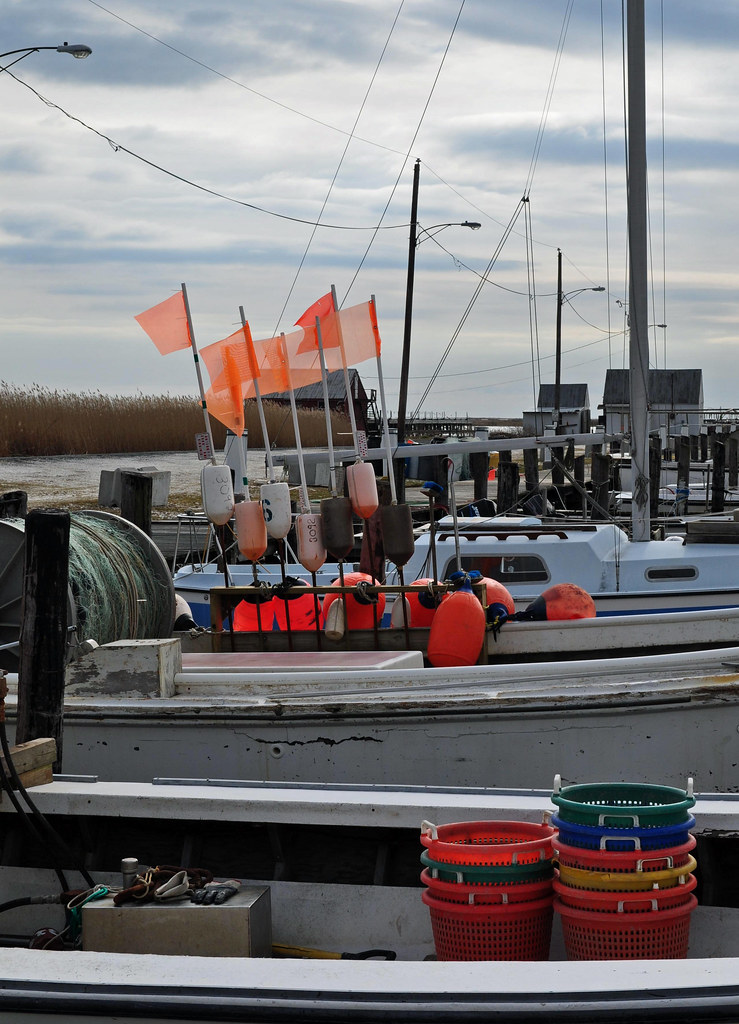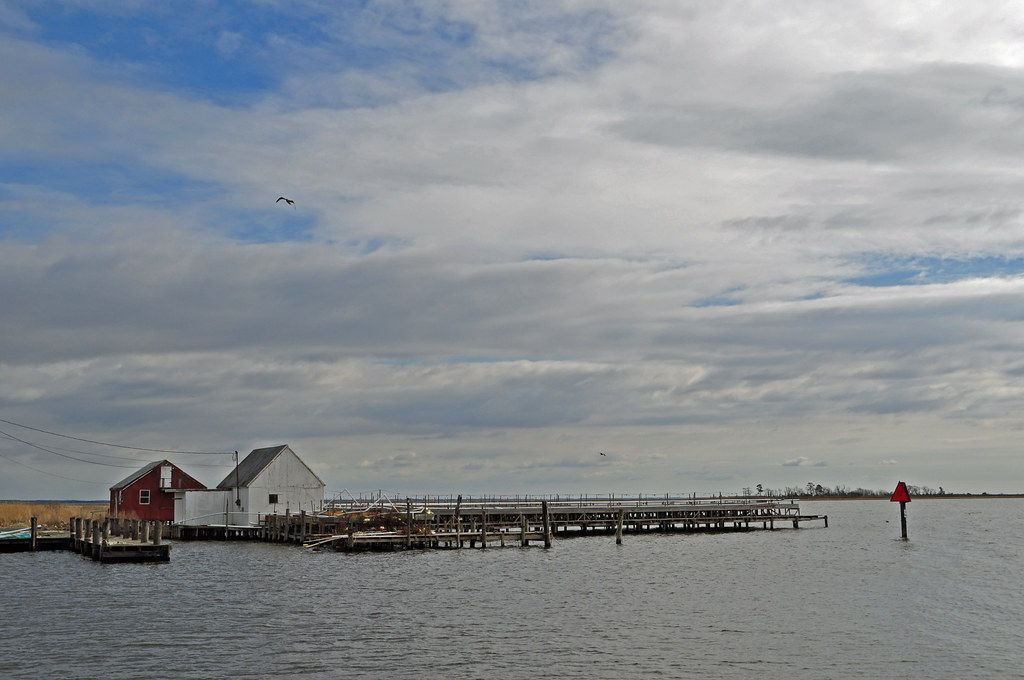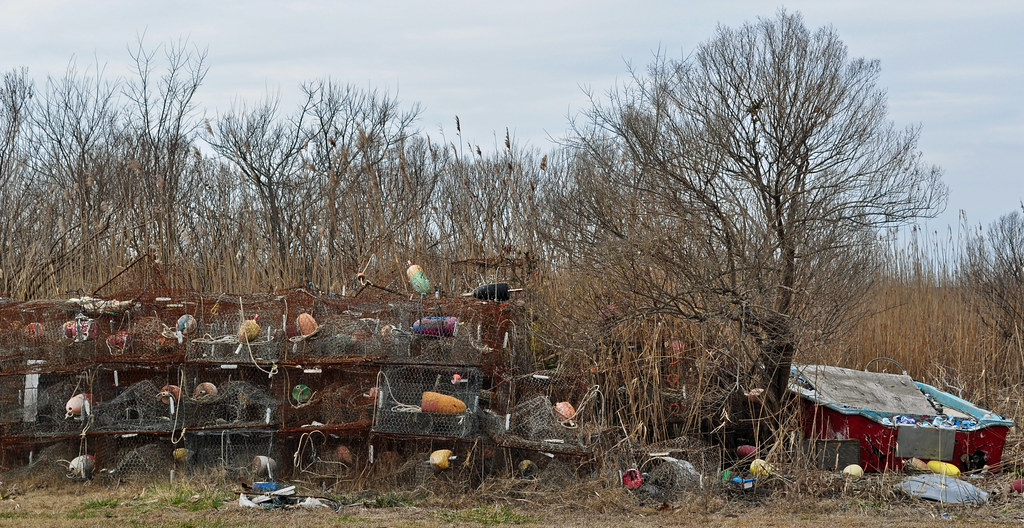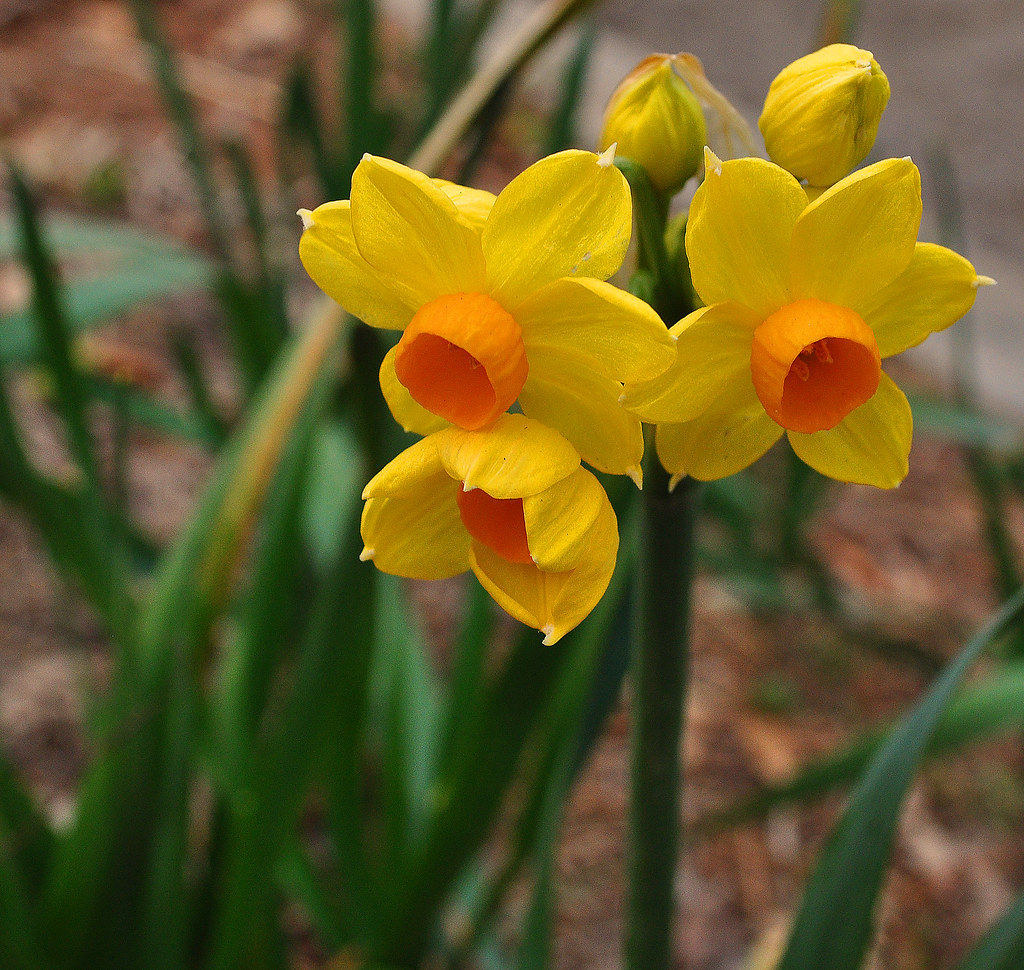March 29, 2010
3 Dogs, 3 Inches
We got over 3" of rain since last night. It was heaviest this morning, and I had to push the dogs out the back door so they could get their business done. If they had their way, Penny and Loretta would have chosen to hold it until later, but poor old Patsy has no such control; it's a race every morning to get her out before an accident happens.
March 26, 2010
The Samurai's Camellia
Sparrows and Camellias, Hiroshige Utagawa
Earlier this winter, one of my favorite customers called me looking for a type of Camellia called Higo, which she said was the Samurai's Camellia. Even though I like to think I know more than a little about one of my favorite plants, I had not heard of these. Most of my ignorance about Samurais and feudal Japan came from reading James Clavell's Shogun and by watching Akira Kurosawa's Ran. Due to her enthusiasm for the plant I did a bit of reading on the topic and tried unsuccessfully to find a source I could access.
Camellia japonica 'Happy Higo'
Higo Camellias are a group of Camellia japonica cultivars that were indeed bred, selected and cherished by Samurais and their families. They take their name from the old Japanese province of Higo, which is now Kumamoto prefecture. There are several characteristics that distinguish these Camellias from others. The most important being lots of showy, exposed stamens (the more the better) that are arrayed in a sunburst pattern. The Japanese refer to this pattern as ume-jin, with ume from the word for Flowering Apricot (Prunus mume) and its similarly patterned stamens. Jin means soul or spirit, so with Camellias blooming in the cold of winter they came to symbolize the Samurai's bravery. Another important characteristic of Higo Camellias are flat, splayed back petals, few in number, often asymmetric, so as to call more attention to the perfect display of stamens. Another characteristic is the clean drop of spent blossoms. Higos were traditionally planted adjacent to the Samurai's burial place so that the fallen flowers could adorn the grave. As well as being a favored garden plant, they were also used extensively in bonsai.
Camellia japonica bonsai from Wikipedia Commons
After the Meiji Restoration in 1868 the Samurai's role in Japanese society was relegated to the myths of history, and the cultivation of Higos was no longer widespread. Individual varieties did manage to survive behind the gates of old family homes, at monasteries and in graveyards. Unfortunately much of Kumamoto and its Camellias were reduced to ashes in World War II. In the late 1950's the Higo Camellia Society was established in Japan, and they have now listed 120 Higo cultivars, including many rescues and a few more recently developed. I was able to find several on-line sources for Higos, but no wholesale growers. Perhaps that will change; while I was at the Norfolk Botanical Garden last week I saw local Camellia grower Bob Black of Bennetts Creek Nursery admiring the few Higos planted there.
Camellia japonica 'Okan'
If you are interested in learning more about Higo Camellias, the International Camellia Society has an informative page. I used their site and Sterling Macoboy's book The Illustrated Encyclopedia of Camellias to get most of my information. For those of you into overkill, I have also recently doubled the number of photos in my Flickr Camellia file.
Earlier this winter, one of my favorite customers called me looking for a type of Camellia called Higo, which she said was the Samurai's Camellia. Even though I like to think I know more than a little about one of my favorite plants, I had not heard of these. Most of my ignorance about Samurais and feudal Japan came from reading James Clavell's Shogun and by watching Akira Kurosawa's Ran. Due to her enthusiasm for the plant I did a bit of reading on the topic and tried unsuccessfully to find a source I could access.
Camellia japonica 'Happy Higo'
Higo Camellias are a group of Camellia japonica cultivars that were indeed bred, selected and cherished by Samurais and their families. They take their name from the old Japanese province of Higo, which is now Kumamoto prefecture. There are several characteristics that distinguish these Camellias from others. The most important being lots of showy, exposed stamens (the more the better) that are arrayed in a sunburst pattern. The Japanese refer to this pattern as ume-jin, with ume from the word for Flowering Apricot (Prunus mume) and its similarly patterned stamens. Jin means soul or spirit, so with Camellias blooming in the cold of winter they came to symbolize the Samurai's bravery. Another important characteristic of Higo Camellias are flat, splayed back petals, few in number, often asymmetric, so as to call more attention to the perfect display of stamens. Another characteristic is the clean drop of spent blossoms. Higos were traditionally planted adjacent to the Samurai's burial place so that the fallen flowers could adorn the grave. As well as being a favored garden plant, they were also used extensively in bonsai.
Camellia japonica bonsai from Wikipedia Commons
After the Meiji Restoration in 1868 the Samurai's role in Japanese society was relegated to the myths of history, and the cultivation of Higos was no longer widespread. Individual varieties did manage to survive behind the gates of old family homes, at monasteries and in graveyards. Unfortunately much of Kumamoto and its Camellias were reduced to ashes in World War II. In the late 1950's the Higo Camellia Society was established in Japan, and they have now listed 120 Higo cultivars, including many rescues and a few more recently developed. I was able to find several on-line sources for Higos, but no wholesale growers. Perhaps that will change; while I was at the Norfolk Botanical Garden last week I saw local Camellia grower Bob Black of Bennetts Creek Nursery admiring the few Higos planted there.
Camellia japonica 'Okan'
If you are interested in learning more about Higo Camellias, the International Camellia Society has an informative page. I used their site and Sterling Macoboy's book The Illustrated Encyclopedia of Camellias to get most of my information. For those of you into overkill, I have also recently doubled the number of photos in my Flickr Camellia file.
March 21, 2010
Awakenings
For this month's Gardening Gone Wild's Picture This Photo Contest the theme is Awakening. Although spring slept in this year, its now out of bed and the coffee is on. The picture I chose is a Magnolia denudata (Yulan Magnolia) taken Friday at the Norfolk Botanical Garden.
The two almost-rans are below. The first is Camellia japonica 'Lily Pons', again taken at NBG, and the second is Camellia japonica 'Nuccio's Gem' from my back yard.
The two almost-rans are below. The first is Camellia japonica 'Lily Pons', again taken at NBG, and the second is Camellia japonica 'Nuccio's Gem' from my back yard.
March 20, 2010
March Madness
This past Wednesday I filmed my TV segments at the Norfolk Botanical Garden with the two topics being Narcissus and Camellias. The segment on Narcissus was to air Thursday evening, but the news was pre-empted by a late running college basketball game. I was not upset as I was still on my own basketball high due to Old Dominion's win over Notre Dame by 1 point. They play Baylor at 5:30 today in New Orleans and many people in this town will be sending them major mental mojo. Anyway, my time was short during Wednesday's shoot as I had to get back to an exponentially increasing, busy work place, and I made a mental appointment to return to the gardens on Friday. The weather this week has been ideal with overnight lows in the 40's, daytime highs in the 60's and low 70's. It has been wonderful for the chilled and sun-starved. Most of the blooms in the garden were of the late winter type, as like most areas, we are a bit behind schedule. However, the Narcissus, Magnolias and of course the Camellias were stunning, but there were many other things blooming as well.
Cornus officinalis - Japanese Cornelian Dogwood
This particular tree is the Virginia state champion.
Corylopsis spicata - Spiked Winterhazel
I loved the shadows cast by the Edgeworthia chrysantha - Rice Paper Plant.
Hermodactylus tuberosus - Snake's Head Iris
I was not familiar with this member of the Iris family and will have to get one for my own garden.
The front entrance of Baker Hall was planted with a beyond cheerful mix of Pansies, Hyacinth and Parsley.
I preferred the color combination from Sedum rupestre 'Angelina' and purple Crocus and will be stealing the idea.
Flowers on deciduous Magnolias are so fleeting, and around here we do not always have a good year for them, but so far, this year looks to be a good one.
Magnolia denudata - Yulan Magnolia
Magnolia stellata - Star Magnolia
Magnolia x soulangiana - Saucer Magnolia
Prunus x incamp 'Okame' - Okame Cherry
This tree was abuzz and vibrating from the hundreds of honey bees on it.
Here are a couple of Camellias, but there may be more in a later post.
Camellia x williamsii 'Pink Dahlia'
Camellia japonica 'Betty Shefield Supreme'
Camellia japonica 'K. O. Hester'
You can see the rest of the set, minus Camellias, here.
Cornus officinalis - Japanese Cornelian Dogwood
This particular tree is the Virginia state champion.
Corylopsis spicata - Spiked Winterhazel
I loved the shadows cast by the Edgeworthia chrysantha - Rice Paper Plant.
Hermodactylus tuberosus - Snake's Head Iris
I was not familiar with this member of the Iris family and will have to get one for my own garden.
The front entrance of Baker Hall was planted with a beyond cheerful mix of Pansies, Hyacinth and Parsley.
I preferred the color combination from Sedum rupestre 'Angelina' and purple Crocus and will be stealing the idea.
Flowers on deciduous Magnolias are so fleeting, and around here we do not always have a good year for them, but so far, this year looks to be a good one.
Magnolia denudata - Yulan Magnolia
Magnolia stellata - Star Magnolia
Magnolia x soulangiana - Saucer Magnolia
Prunus x incamp 'Okame' - Okame Cherry
This tree was abuzz and vibrating from the hundreds of honey bees on it.
Here are a couple of Camellias, but there may be more in a later post.
Camellia x williamsii 'Pink Dahlia'
Camellia japonica 'Betty Shefield Supreme'
Camellia japonica 'K. O. Hester'
You can see the rest of the set, minus Camellias, here.
March 17, 2010
Old Ireland
In honor of St Patrick's Day, head over to the Library of Congress' Flickr page. They have recently uploaded photochrom pictures of Ireland taken at the turn of the last century. Everything looks idyllic and traditionally green, however, these photos were taken when Ireland was only one generation away from the famine that depopulated the country - while at the same time adding a rich layer to the United States.
(all photos were taken from the Library of Congress Flikr site with no known restrictions on publication)
(all photos were taken from the Library of Congress Flikr site with no known restrictions on publication)
March 15, 2010
Bloom Day - Better Late Than Never
Spring finally got here this week, a little late, somewhat disheveled, and without all of her makeup on - but I couldn't have been more glad to see her. I have always had a remote fear that would make for good eco-science fiction. What if spring didn't come one year; the trees didn't leaf out; the flowers failed to bloom; it never got warm? What if one of earth's oldest cycles was broken? That's a show I don't want to see.
For this month's Bloom Day the normal cast of March characters is still missing a few key players and there are several holdovers from previous shows that refuse to leave the stage. But as it is said, the show must go on, and the curtain is rising whether the cast is ready or not.
Debuts
Narcissus
Asarum splendends (Chinese Ginger)
Edgeworthia chrysantha (Rice Paper Plant)
Camellia japonica 'Nuccio's Gem'
Camellia japonica 'Magnoliaflora'
Camellia x 'Crimson Candles'
Encores
Helleborus orientalis
Camellia japonica 'Les Marbury'
Stage Hogs
Camellia sasanqua 'Yuletide'
Viola Delta Tapestry Series
To see what is on other gardener's stages visit the director of Garden Bloggers Bloom Day - Carol at May Dream Gardens.
For this month's Bloom Day the normal cast of March characters is still missing a few key players and there are several holdovers from previous shows that refuse to leave the stage. But as it is said, the show must go on, and the curtain is rising whether the cast is ready or not.
Debuts
Narcissus
Asarum splendends (Chinese Ginger)
Edgeworthia chrysantha (Rice Paper Plant)
Camellia japonica 'Nuccio's Gem'
Camellia japonica 'Magnoliaflora'
Camellia x 'Crimson Candles'
Encores
Helleborus orientalis
Camellia japonica 'Les Marbury'
Stage Hogs
Camellia sasanqua 'Yuletide'
Viola Delta Tapestry Series
To see what is on other gardener's stages visit the director of Garden Bloggers Bloom Day - Carol at May Dream Gardens.
March 9, 2010
Saxis Island
The Chesapeake Bay is ringed with small, picturesque waterfront towns. Many of these places have capitalized on their scenic location, rich histories and close proximity to major population centers to become thriving destinations. Antique filled B&B's, art galleries, coffee shops, sail and kayak rentals and busy restaurants are just some of the attractions in towns full of second homes and weekend getaways.
Saxis, Virginia is not one of these towns.
The town sits on small, narrow Saxis Island and is surrounded on one side by over 5,500 acres of a relatively pristine marsh, laced with small creeks that forms the Saxis Wildlife Management Area. The other side of the island faces the Chesapeake Bay and Maryland at the entrance to Pocomoke Sound. What counts for high ground on Saxis is really no more than a hummock of less wet land and is barely a few feet above sea level. Since suitable land to build on is in short supply, the lots tend to be small and houses are huddled together along the few roads in town.
Originally known as Sykes Island, the town was settled in the late 1600's, and early resident's livelihoods centered around raising cattle. In the 1800's Saxis became an important source for seafood; fish, crab and especially oysters were plentiful, and the town sent its harvest by steamboat to markets along the Eastern Seaboard. Since the collapse of the oyster industry and with low fish hauls, the 300 people on Saxis today make their living on blue crabs, or by supporting people who do. The harbor is ringed with crab houses where the live crustaceans are sold in their shell or held until they molt providing restaurants with the more lucrative, seasonal delicacy of soft shell crabs. Other than the crab houses there is one small store, a volunteer fire station and the Methodist church. It seems the only other industry in town is raising the foundations of its houses in an effort to stay ahead of storm tides and rising sea levels.
(entire set here)
March 7, 2010
The Tidewater Garden Symposium - 2010
Thursday, I was once again privileged to attend The Tidewater Garden Symposium, and as usual, the line-up of speakers was fantastic (here is my post from last year). The first speaker was Jeff Lowenfels, author of the book Teaming With Microbes: A Gardener's Guide to the Food Web. As gardeners we all love beautiful flowers, stately trees, historic gardens and fresh fruits and vegetables. I know that all these things result from what happens under the soil line, and normally this is not the most interesting part of gardening to me. But before hearing Mr. Lowenfels speak, I never would have realized just how enthralled I could be hearing someone speak on soil science.
The second speaker, Chip Callaway was perhaps my favorite. Although I am not sure why, I have never previously heard of him nor his company, Callaway and Associates. This prolific North Carolina firm has designed nearly 1000 gardens, and one of their specialties is working on historic properties. Mr. Callaway took us through a small part of his portfolio, all the while injecting a serious degree of Southern humor delivered with a rich Carolina accent. My favorite property he showed us was Wharton Hall, which happens to be within walking distance of the house where my great-grandmother, Mammy Nock lived in Assawoman, Va. Even though the houses are very close, they are worlds away from each other. If you are interested, his web site is here, including a gallery of some of his projects.
Pam Baggett was the next speaker and she spoke about using tropical plants in temperate gardens. She was the owner of the sadly now defunct Singing Springs Nursery, which was a mail order nursery in North Carolina specializing in tropical plants. I still have a Euphorbia 'Sticks On Fire' that I got from Singing Springs years ago. Ms. Baggett was promoting her recent book Tropicalismo! and she had some luscious photography to show us. The bright colors and bold textures were welcome distractions on yet another cold day.
The last to speak on Thursday is one of the godfathers of television horticulture, Roger Swain. His topic was "Vegetables for Every Appetite" and I left ready to pull up my shrubs and perennials in favor for something more edible. We were a PBS family growing up and I remember him from The Victory Garden before it changed and changed and changed again. One thing that was not apparent watching the show was just how funny Roger Swain is. He has a great sense of humor, as well as a vast knowledge of all things horticultural.
The day ended with door prizes, some of which I contributed, or at least my company did. I really would like to commend the ladies from the Garden Clubs of Norfolk and Virginia Beach for once again sponsoring a great host of speakers, I don't know how they do it, but am glad they do. For me this event is always a sign that spring is here, and since my first Narcissus (pictured above) began opening the same day, it must be true.
The second speaker, Chip Callaway was perhaps my favorite. Although I am not sure why, I have never previously heard of him nor his company, Callaway and Associates. This prolific North Carolina firm has designed nearly 1000 gardens, and one of their specialties is working on historic properties. Mr. Callaway took us through a small part of his portfolio, all the while injecting a serious degree of Southern humor delivered with a rich Carolina accent. My favorite property he showed us was Wharton Hall, which happens to be within walking distance of the house where my great-grandmother, Mammy Nock lived in Assawoman, Va. Even though the houses are very close, they are worlds away from each other. If you are interested, his web site is here, including a gallery of some of his projects.
Pam Baggett was the next speaker and she spoke about using tropical plants in temperate gardens. She was the owner of the sadly now defunct Singing Springs Nursery, which was a mail order nursery in North Carolina specializing in tropical plants. I still have a Euphorbia 'Sticks On Fire' that I got from Singing Springs years ago. Ms. Baggett was promoting her recent book Tropicalismo! and she had some luscious photography to show us. The bright colors and bold textures were welcome distractions on yet another cold day.
The last to speak on Thursday is one of the godfathers of television horticulture, Roger Swain. His topic was "Vegetables for Every Appetite" and I left ready to pull up my shrubs and perennials in favor for something more edible. We were a PBS family growing up and I remember him from The Victory Garden before it changed and changed and changed again. One thing that was not apparent watching the show was just how funny Roger Swain is. He has a great sense of humor, as well as a vast knowledge of all things horticultural.
The day ended with door prizes, some of which I contributed, or at least my company did. I really would like to commend the ladies from the Garden Clubs of Norfolk and Virginia Beach for once again sponsoring a great host of speakers, I don't know how they do it, but am glad they do. For me this event is always a sign that spring is here, and since my first Narcissus (pictured above) began opening the same day, it must be true.
Subscribe to:
Posts (Atom)

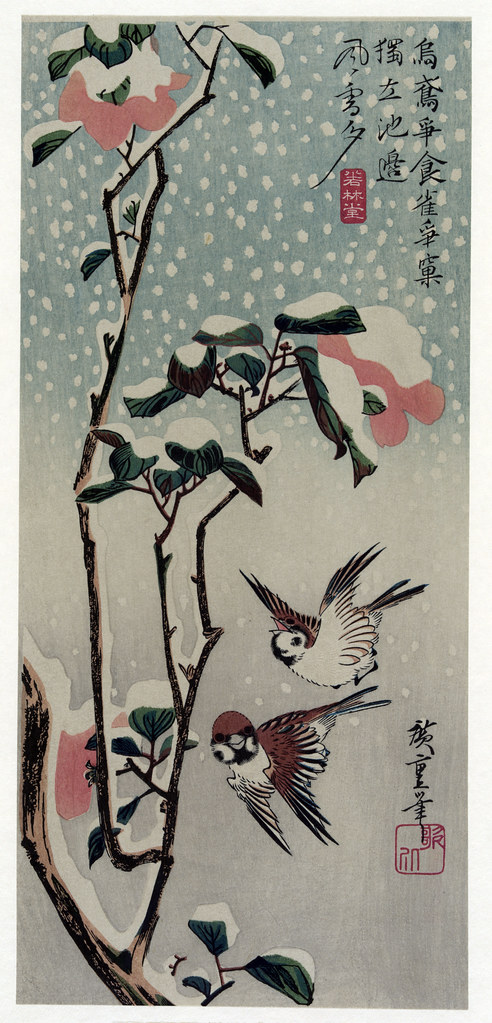
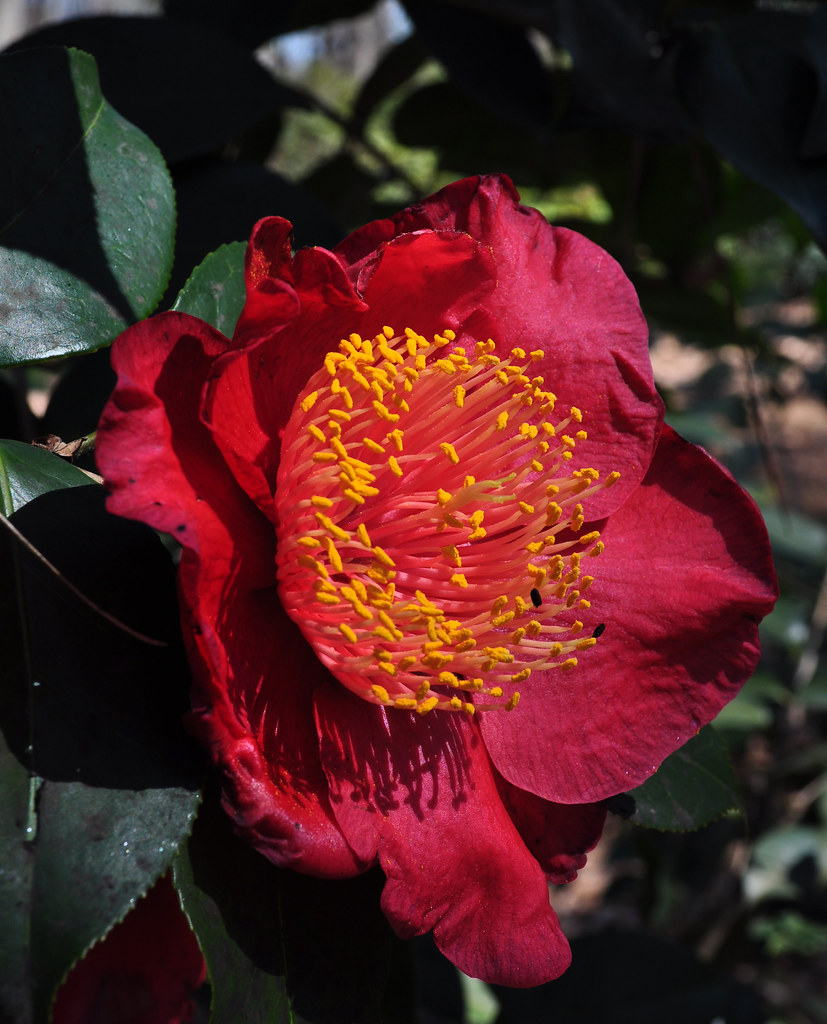
![479px-Japanese_Camellia_bonsai_55,_December_24,_2008[1]](http://farm3.static.flickr.com/2800/4465504447_122abd7a31_o.jpg)
